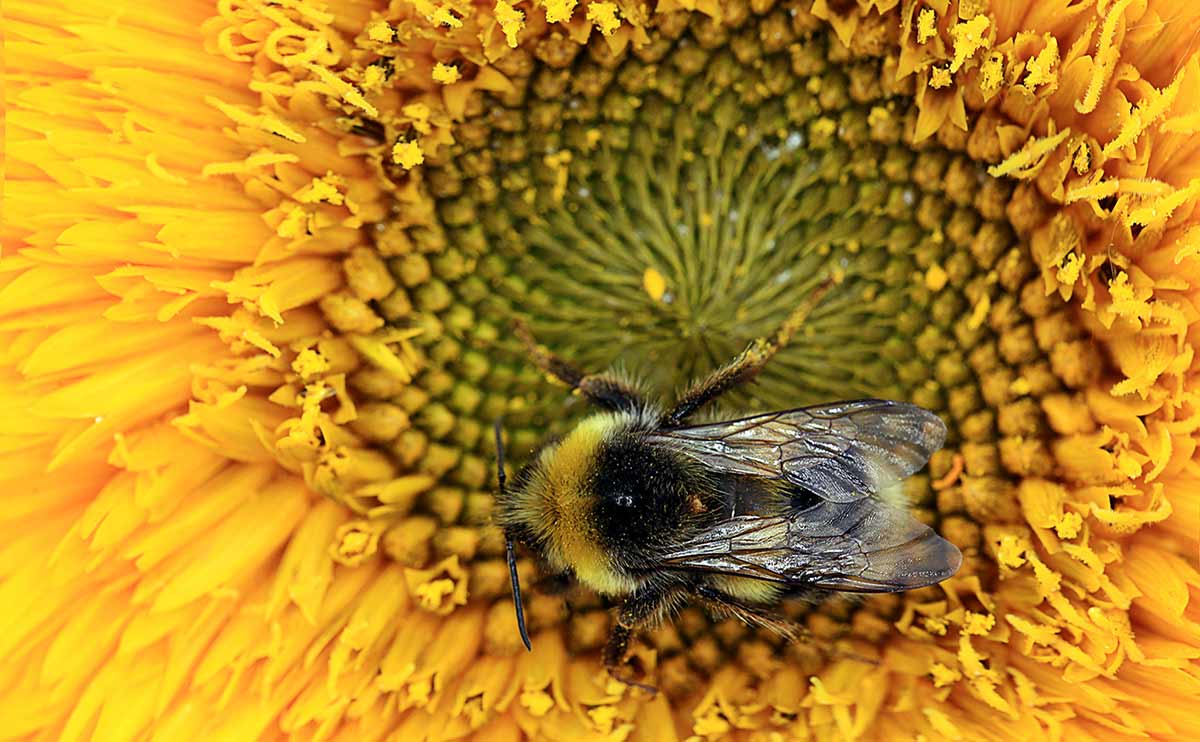A Canadian company has dreamed up a new way to use bees on the farm -- make them delivery agents for organic pesticides and fertilizers.

Basically the system works like this: Bees (in this case, bumble bees) leave their hive an average of 1,000 times per day. While on their forays they buzz from flower to flower spreading the building blocks of nature, at a rate of up to 10 flowers a minute.
‘The way I see it is that what’s harmful to the bees, in all likelihood, isn’t very good for us either, so why are we using it?’
Here’s where BVT comes in. Utilizing a specialized hive system, called a Bumble Box, bees exiting the hive pass through small trays of organic pesticide and fertilizer powder that sticks to their hairy legs. (Per BVT, the fungal pesticides are not harmful to bees or humans.) As the bees go about their daily routine the powder rubs off on each flower, effectively delivering the solution directly to the source.
The boxes are designed so that the bees cannot exit the hive without passing through the trays. Bee Vectoring Technologies CEO Mark Collinson says the trays, which are also made by BVT, allow the bio-controls to be delivered throughout the entire bloom cycle, unlike traditional sprays, which are usually only used once per bloom.
The trays come pre-packaged (think TV dinner), and need to be changed every three days. Collinson says this extended delivery allows the bees to layer the fertilizer and pesticide over the entire crop for 21 days.
[mf_mosaic_container columns=”3″ credits=”Bee Vectoring Technologies Inc. ” captions=”yes”]
[mf_mosaic_item src=”https://modernfarmer.com/wp-content/uploads/2014/07/Bee1.jpg” number=”1″ caption=”A one-way door makes sure the bees have to pass through the powder trays before leaving.”]
[mf_mosaic_item src=”https://modernfarmer.com/wp-content/uploads/2014/07/Bee2.jpg” number=”2″ caption=”The Bumble Box is easy to move around the field.”]
[mf_mosaic_item src=”https://modernfarmer.com/wp-content/uploads/2014/07/Bee3.jpg” number=”3″ caption=”An inside look at the powder tray.”]
[/mf_mosaic_container]
But can bees handle the extra workload?
Mark Winston, Professor of Apiculture and Social Insects at British Columbia’s Simon Fraser University has been studying bees for over 20 years and has his doubts. Although he hasn’t studied the project directly, he isn’t convinced the bees could effectively deliver the fertilizer and pesticides in precise enough doses to be effective.
However, Collinson says that after seven years of testing, BVT has seen promising results. They claim their patent-pending powder and delivery method can increase pesticide effectiveness by up to 30 percent. They’ve also seen increased crop yields at their 10-acre test field he says.
With pesticide use increasing, and bee populations declining, Collinson hopes his concept will help decrease the use of toxic chemicals and create an increase in the demand for bees.
“The way I see it is that what’s harmful to the bees, in all likelihood, isn’t very good for us either, so why are we using it?”
Good question.